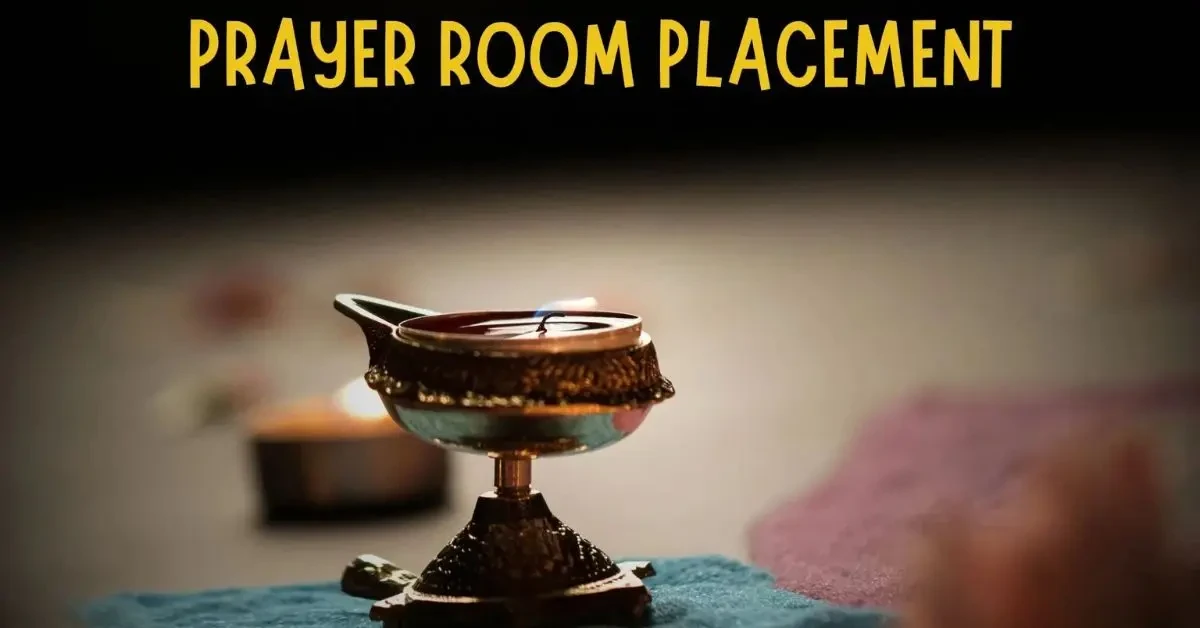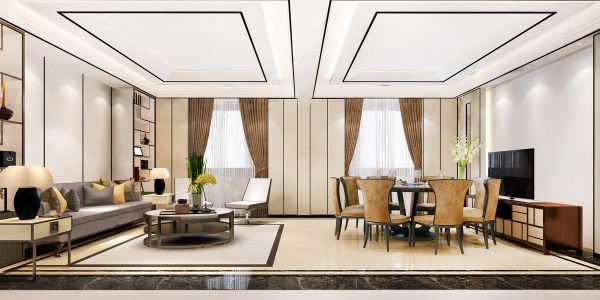




1957 Views | October 31, 2024
The prayer room is an important part of every Indian home and a key element of designing the house. It is a holy shrine where people worship, pray, prostrate, go for refuge, and practice devotion and worship every day. By applying some principles of Vastu Shastra—the ancient Indian architectural science—to the prayer room Vastu, it is possible to achieve maximum positive energy for spiritual purposes and self-development. Ideally, in this blog, you will learn some of the most basic facts regarding the application of Vastu in creating an exceptional prayer room Vastu.

The placement of the prayer room is paramount. Vastu recommends the following directions:
Best Direction: The best location for a prayer room is the northeastern corner of the premises otherwise called Ishan Kona. This direction is treated as home to Lord Shiva and brings calm and peaceful vibrations into a home or a building.
Alternative Directions: This is a good location if Northeast cannot be achieved; East or North may be used also.
Avoid These Locations: The prayer room should never be oriented in the southwest, southeast, or located below a staircase. These areas are deemed to be unworthy and may interfere with the nature of the area in question.
The shape and design of the prayer room play a critical role in maintaining harmony.
Shape: Prefer square or rectangular to preserve stability and balance in a house. Do not use odd or oval shapes, go for even and round instead.
Height of Ceiling: The ceiling should not be low, since it will give an impression of having a small room. That is, a pyramid or high ceiling helps to circulate energy flows effectively.
Separate Space: Bedrooms, kitchens, and bathrooms should particularly not be close to the prayer room to enhance the prayer room’s sanctity.
The orientation of deities and idols is crucial for spiritual energy flow.
Direction of Placement: It brings deities and idols to the east or west direction because devotees offer prayer in the north or east direction.
Height from the Floor: Make sure that the idols are not set at such a low level that is on the floor of the room as well should not be placed too high in the room. A pedestal is ideal.
Material of Idols: Make Idols of materials such as Marble, wood, or metallic. Among them, one should not buy idols that are either broken or chipped as they are labeled as ‘inauspicious’.
The entry and exit points influence the flow of energy in the prayer room.
Door Design: In the prayer room, there should be a door – a better, wooden one. It is best to have a two-shuttered door; engravings, or paintings featuring good fortunes should be on the door.
Windows: Houses should be oriented to open windows in the northern or eastern part of the house to provide for natural lighting and airflow.
The choice of flooring and colors can significantly impact the ambiance of the prayer room.
Flooring: As for floorings, it is better to choose marble or stone solutions as they create associations with calmness and purity. Do not use dark-colored or slippery floors.
Wall Colors: Such things as white, cream, or pastel colors are recommended for a prayer room vastu, especially when the natural lighting of the room is going to be used. These colors are calming, allowing for actual meditation to happen. Trying to avoid using colors that are too dark or too vibrant would simply take your attention away.
A well-lit and ventilated space radiates positive energy.
Lighting: Energy-efficient fluorescent bulbs should be used since light should be soft and have a warm wavelength. Traditional lamps more commonly referred to as diyas can help add the correct spiritual undertone. Eliminate sources of bright or blinking light.
Ventilation: Proper ventilation of the space should be encouraged so that the space is fresh. If can, try and ensure that the room is naturally light-lit.
Maintaining tidiness in the prayer room is essential for its sanctity.
Storage Units: Place a cabinet or shelf where the holy books, incense, lamp or any other items that may be used for rituals should be placed. That way, they don’t look messy and cluttered.
Furniture: As little furniture as possible should be brought into the house, especially in a prayer room vastu setting. A small mat or carpet to sit on is enough. It is better not to buy massive or gaudy furniture pieces that can dominate the small interior.
To ensure the space adheres to Vastu principles, follow these key guidelines:
1. First and most importantly, make sure the bedroom is always neat so as to fill the room with positive energy.
2. For designing, employment of holy icons such as Om, Swastika, or the lotus emblem, etc.
3. Use low light and no talking or turn on soft religious music in the background to ensure there is no disturbance.
4. Burn some incense sticks or lamps or diyas every day to clean the atmosphere of the whole house.
1. DO NOT locate the prayer room in bedrooms, under the stairs, or in basements.
2. There are no unnecessary or other items that should be left in the prayer rooms hence should not be stored in the prayer room.
3. Do not place the prayer room across the overall bathroom or kitchen area.
4. Do not convert the space into other forms of use apart from praying or meditating.
Certain elements can amplify the spiritual energy of the prayer room:
Water Feature: The simplest thing that can be done is – the presence of a mini water fountain or a saucer with water and flowers floating on the water surface.
Plants: Ensure you have a few numbered indoor plants such as Tulsi (Holy Basil) in the house.
Bell or Chime: A bell or chime is an excellent tool if it is rung, for it clears out any negative energies.
Sacred Texts: Put religious books such as the Bhagavad Gita, Quran, Bible, or any book you pray in a specific place.

Modern homes especially the apartments ones present difficulty due to space available in conducting the exercises. Here’s how you can adapt:
Compact Prayer Units: A minimalist prayer corner can be a small wooden cabinet or a wall shelf, just to accommodate prayer needs.
Creative Placement: If it is not possible to allocate a fixed room for praying, transform a corner of the living room or a section of the kitchen counter into a prayer area.
Use of Screens: Install a divider of some sort to at the very least give the prayer area a distinct look or install a curtain that divides the space.
To know how to pray for a successful career, Vastu suggests the construction of a prayer room Vastu compliant space. Following these principles, whether the environment is a whole room or a corner, complies with the dire consequences of evoking feelings of peace, positive energy, and divine providence.
It is always possible to link up with the traditional structures and at the same time append the contemporary designs to make your sanctuary as you want it to be.